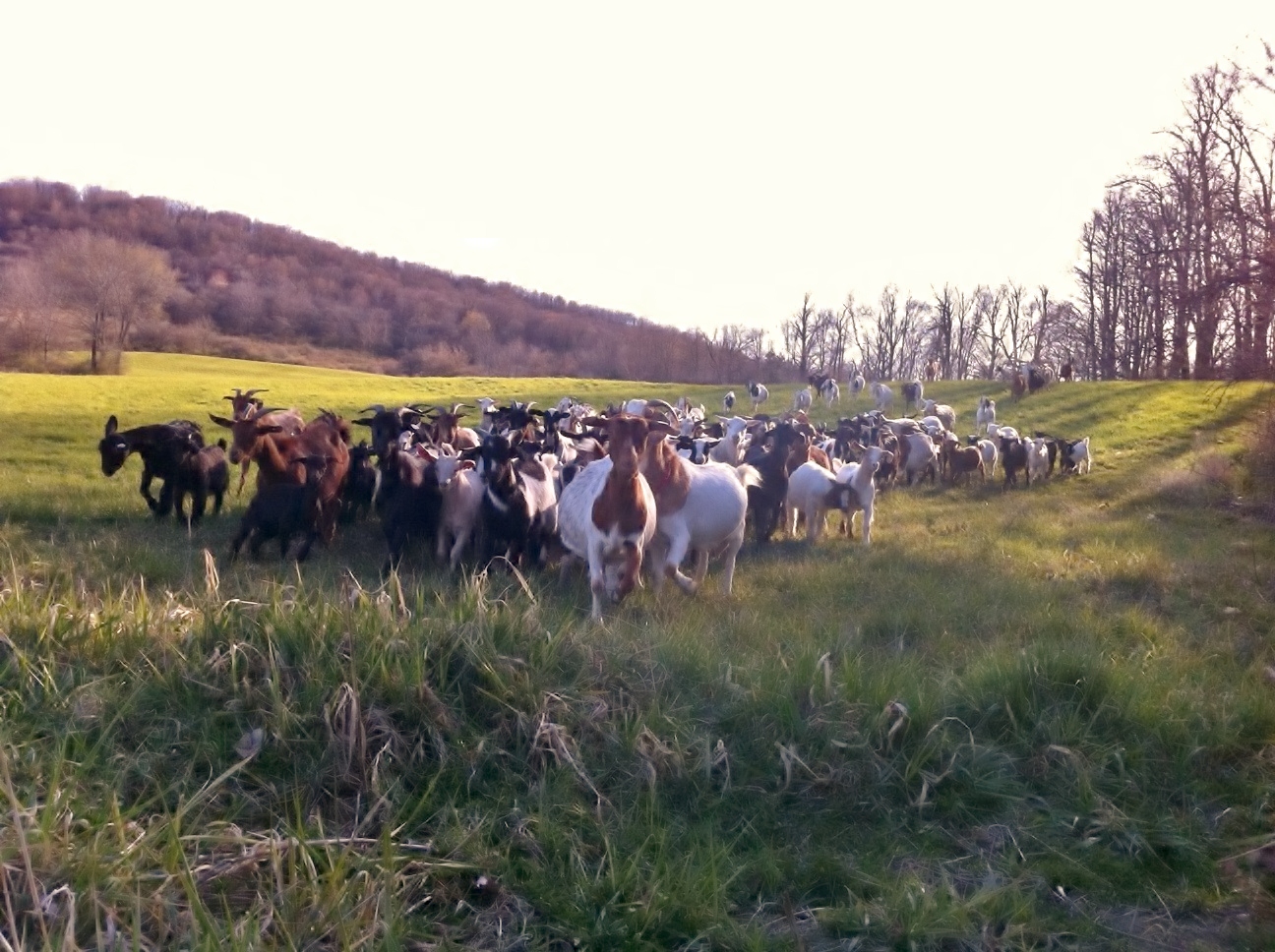Fences are a vital piece of just about any farm, especially farms where livestock graze on pasture. Vegetable farmers and orchards, too, need to fence out deer and other critters, unless they don’t mind feeding the neighborhood wildlife. Early spring, when the frost has “jumped” out of the ground, you’ll see farmers walking their fence lines—mending broken posts, tightening wire and replacing staples. Winter’s heavy snows, fallen trees, and snow plows all do their fair share of damage. The rapidly approaching lush growth of summer will soon make this task rather impossible. It’s much easier to spot problems in the spring; it’s even easier to get in and out of brushy or rocky areas with a four-wheeler now than it will be in a just a couple weeks. And that’s when our animals and unwanted wildlife will be putting pressure on our fences.
For the most part, farmers and their animals are anxious to get everyone out of the barn or barnyard and onto spring’s greening pastures. Watching our livestock—even our 250-pound ram—jump, frolic, and generally kick their heels up is enough to make a person laugh out loud. Getting animals out on pasture also means the farmer can stop buying so much expensive feed and let the animals do their thing. And best of all, animals on pasture spread their manure where it will do a load of good, fertilizing and replenishing the soil—not piling up in the barn where it will have to be cleaned out by man or machine. I’d rather spend time working on fence than making hay any day!
Different animals require different types of fence, of course. You may have noticed horse farms with wide, white tape as the top fence line, or at least wide boards making up the structure of their fences. The horses need a bold visual marker so they don’t accidentally hurt or even maim themselves on unseen wires. Most dairy and beef operations need nothing more than a couple of barbed wires, with perhaps one “hot wire” for added effect. And with the exception of cows freshening (giving birth) on pasture, there is little need to worry about pressure from coyotes. Smaller ruminants, like sheep and goats, however, are a walking smorgasbord for coyotes, foxes, neighboring or wild dogs, bear, wolves, etc. You name it…it likes to eat cute animals on four hooves. Sadly, it is equally difficult fencing the goats and sheep in an area where we want them to stay. There’s an old saying that, “if it won’t hold water, it won’t hold a goat.” Sadly, this is all too true.
For our sheep and goats, we use 5-strand, high-tensile fencing. “High-tensile” just means that the wires are made extremely taught with rather serious-looking springs. We use a very powerful electric fence energizer that if touched, “snaps” so loudly you’d think someone just snapped a wet towel. IF the weed load is low (which means electricity is flowing freely) AND there are no gaps in the fence, this system will keep our goats and sheep in and unwanted predators out. That is one big “IF,” however! Our goats are escape artists with tremendous memories—and the power of herd mentality means that if one goes, they all go. They remember our neighbor Bob’s alfalfa field from several years ago or that Steve’s cornfield is just down the hill and across a road. Every one of our neighbors has called at least once in the last handful of years to ask, “Do you know where your goats are?” I very often joke that when I write my memoir (which is a joke in itself), it will be entitled: “Hey Lady, Your Goats Are in the Road!”
After we’ve mended our existing fence, we will be putting in new—opening up additional pastures so we can move our animals more often. We use “rotational grazing,” which means animals are moved from pasture to pasture on a set schedule or as conditions warrant. You don’t want them overgrazing a particular area for several reasons: for the sake of pasture quality and optimal nutrition, to avoid exposing the animals to intestinal (or other) parasites, and to avoid putting too much pressure on the fence. If they are happy eating where they are, they are less likely to want to get out. Or so the theory goes… Our goal has always been to raise happy, healthy animals and to keep our neighbors happy, too (a goal we have yet to truly reach). Keep your fingers crossed for us and stay tuned!
